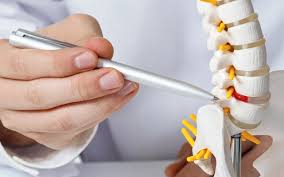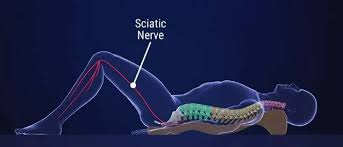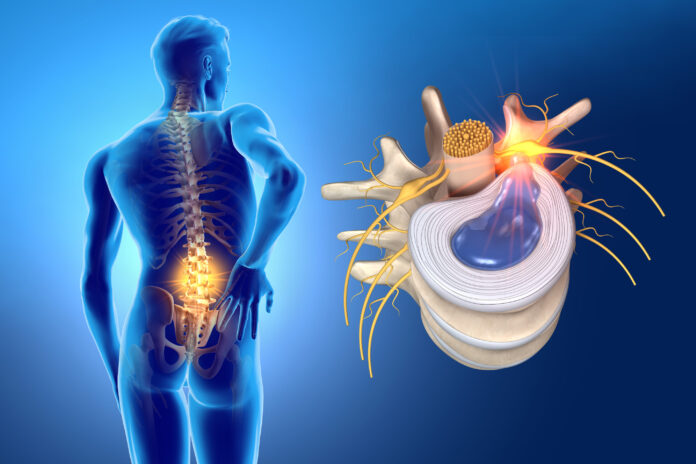Sciatica is a medical condition that refers to pain radiating along the sciatic nerve, which extends from the lower back down the legs. It occurs when the sciatic nerve is irritated or compressed, typically due to a herniated disc, degenerative disc disease, or spinal stenosis. The condition can lead to varying degrees of pain, numbness, tingling, and weakness in the affected leg. In some cases, sciatica can even lead to long-term complications if not addressed properly.
However, disc regeneration, which refers to the process of repairing or regrowing damaged spinal discs, has emerged as a key area of focus in medical research. The regenerative process aims to alleviate pain and improve the quality of life for sciatica sufferers, especially in cases where traditional treatments have failed.
In this article, we will explore the symptoms of sciatica, the potential for disc regeneration, preventive measures, the best treatment options available today, and the success rates of surgery performed by top doctors around the world.
Symptoms of Sciatica
Sciatica manifests in several ways, depending on the underlying cause of the nerve compression. The most common symptoms include:
- Pain: The hallmark symptom of sciatica is pain that radiates from the lower back, often traveling through the buttocks and down one leg. The intensity of the pain can vary, ranging from mild discomfort to severe, debilitating pain.
- Numbness and Tingling: Patients may experience sensations of numbness or tingling in the leg or foot, often referred to as “pins and needles.” This symptom occurs due to pressure on the sciatic nerve, affecting sensation in the lower extremities.
- Muscle Weakness: Prolonged compression of the sciatic nerve can lead to muscle weakness in the affected leg, making it difficult to walk or stand for extended periods.
- Loss of Reflexes: Reduced reflexes in the leg may occur as a result of nerve damage, leading to a lack of responsiveness when the knee or ankle is tapped.
- Worsening Pain with Movement: Certain movements, such as bending, twisting, or sitting for long periods, can exacerbate the pain and discomfort associated with sciatica.
In addition to these symptoms, some individuals may also experience pain that worsens when coughing, sneezing, or laughing, which increases pressure on the sciatic nerve.
Causes of Sciatica

The primary causes of sciatica are conditions that affect the spine and spinal discs. These include:
- Herniated Disc: A herniated or slipped disc occurs when the soft, gel-like center of a spinal disc pushes through a tear in the tougher outer layer. This can press on nearby nerves, including the sciatic nerve, leading to pain and discomfort.
- Degenerative Disc Disease: As people age, the spinal discs naturally lose hydration and elasticity, which can cause them to flatten, lose cushioning, and cause nerve compression.
- Spinal Stenosis: Spinal stenosis occurs when the spaces within the spine narrow, putting pressure on the spinal cord and nerves, leading to symptoms of sciatica.
- Spondylolisthesis: This condition occurs when one vertebra slips out of place onto the one below it, which can compress nerves and lead to sciatic pain.
- Piriformis Syndrome: A condition where the piriformis muscle, located in the buttocks, spasms and compresses the sciatic nerve, causing sciatica-like symptoms.
Disc Regeneration: Can It Help?
In recent years, medical researchers have been exploring ways to regenerate damaged spinal discs, which could potentially help individuals suffering from sciatica caused by disc degeneration or herniation. The goal of disc regeneration is to repair or replace the damaged or degenerated discs to restore normal spinal function and alleviate pain.
While traditional treatments such as pain management, physical therapy, and surgery remain common approaches to treating sciatica, regenerative medicine offers new hope for patients who have not responded well to conventional therapies.
Types of Disc Regeneration Treatments
- Stem Cell Therapy: Stem cells have the potential to regenerate damaged tissues, including spinal discs. Research into stem cell therapy for disc regeneration involves injecting stem cells into the affected area of the spine to promote healing and repair.
- Platelet-Rich Plasma (PRP) Therapy: PRP therapy involves using the patient’s own blood to extract platelets that contain growth factors. These platelets are then injected into the damaged disc area to stimulate healing and tissue regeneration.
- Gene Therapy: Gene therapy for disc regeneration involves introducing certain genes into the affected disc to promote tissue repair and regeneration. This method is still in its early stages but shows promise for future treatments.
- Tissue Engineering: This approach involves using biomaterials, growth factors, and stem cells to create a scaffold that encourages the regeneration of spinal discs.
While these treatments are still under investigation and may not yet be widely available, they represent an exciting frontier in the fight against sciatica and other spine-related disorders.
Best Treatment Options for Sciatica

For many individuals with sciatica, conservative treatments are effective in managing symptoms and improving quality of life. These treatments include:
- Physical Therapy: A physical therapist can design an exercise regimen that targets the muscles supporting the spine, improving posture, flexibility, and strength. This helps to alleviate pressure on the sciatic nerve.
- Medications: Nonsteroidal anti-inflammatory drugs (NSAIDs), muscle relaxants, and nerve pain medications are commonly prescribed to manage pain and inflammation associated with sciatica.
- Epidural Steroid Injections: In some cases, a doctor may recommend an epidural steroid injection to reduce inflammation around the affected nerve and provide temporary relief.
- Surgery: In cases of severe or persistent sciatica that does not improve with conservative treatments, surgery may be necessary. The most common procedures include:
- Discectomy: Removal of the herniated portion of the disc pressing on the nerve.
- Laminectomy: Removal of part of the vertebra to relieve pressure on the nerves.
- Spinal Fusion: Fusing two or more vertebrae together to stabilize the spine.
Top Surgeons and Success Rates
When surgery is required, choosing an experienced and skilled surgeon is crucial to achieving successful outcomes. Some of the world’s top spine surgeons specialize in treating sciatica and related spinal conditions.
- Dr. Richard Deyo (USA): A leading expert in spinal health, Dr. Deyo has performed thousands of successful spinal surgeries and is well-regarded for his research on sciatica treatments.
- Dr. Adnan K. Munkarah (USA): Known for his innovative approach to spine surgery, Dr. Munkarah has achieved excellent results in treating sciatica, especially in complex cases involving degenerative disc disease.
- Dr. Jörg L. Ziegler (Germany): Dr. Ziegler is a pioneer in minimally invasive spine surgery and has a high success rate in treating patients with sciatica and herniated discs.
Success rates for sciatica surgery vary based on the procedure and the patient’s specific condition, but studies suggest that discectomy and laminectomy procedures offer success rates of 80-90%, with most patients experiencing significant pain relief.
Conclusion
Sciatica is a complex condition with various causes and symptoms, but advances in medical treatments, including regenerative therapies and surgical interventions, provide hope for those suffering from chronic pain. With the continued development of disc regeneration techniques, patients may soon have access to even more effective solutions for alleviating pain and restoring spinal health. However, as always, consulting with a qualified healthcare provider and choosing the right treatment plan is key to managing and overcoming sciatica.


